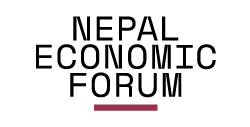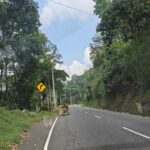Last week, I made a trip to the Kodari border, about 110 kilometers from Kathmandu—the closest border point to China from the capital. I have been making these journeys for the past thirty years, starting with the feasibility study of Upper Bhote Koshi Hydroelectric project, the first US-invested independent power producer which was promoted by the Soaltee Group, where I worked at the time. It was appalling to see the road conditions from Barhabise to Kodari. While the 2015 earthquake and subsequent floods—most recently in September 2024—have severely damaged infrastructure, the deeper issue lies in why these roads are never rebuilt. Locals undoubtedly want the damaged roads repaired and long-overdue improvements made. However, the realities are posed when we realize the reasons why these roads never get built. It is even sadder to realize that this remains to be true for development of other infrastructures in Nepal.
One of the major reasons why infrastructure is not well developed here in Nepal is the prevailing mindset of patchwork repairs rather than meaningful, long-term transformations. As a result, the focus is more on constant repairs over a sustainable road network that supports local industries. On top of this, many local politicians and elected officials own bulldozers and construction equipment, shifting priorities from quality infrastructure to projects that require frequent repairs. The federal government and its leaders provide blessings similar to birta grants during Shah-Rana regime, keeping equipment busy rather than investing in anything that is long term and durable. The “bulldozer deployment tactic” I wrote about in Unleashing Nepal was a result of the All-Party Mechanism (APM) during political transitions. Companies co-owned by representatives from different political parties ensured that equipment remained in use—an effective way to siphon government revenue into private pockets.
While a lot has been said about Nepal being impacted by the aid freeze, we tend to forget that we are a USD 44 billion economy with a billion dollars allocated annually for building of infrastructure. However, in the last five years no government has been able to spend more than 40% of this budget. It is nearly impossible to utilize a billion dollars through petty contracts alone. Even when multilateral agencies are involved in infrastructure, the progress has remained slow due to alleged procurement and payment issues. Perhaps Nepal is one of the few countries where even Chinese firms—known for their efficiency elsewhere—fail to complete projects on time due to different challenges. Road expansions often turn into logging contracts, focused more on chopping down trees than development. The same is emerging for a proposed airport in Nijgadh, which is again aimed at providing logging contracts.
Himalayan road building is not an easy task, but we can learn from our neighbors. The Paro-Thimpu stretch in Bhutan, similar in distance to the Kodari-Dhulikhel route, can be covered in just one hour! We do not need to look to Switzerland or Singapore, when we can simply learn from our neighbor-Bhutan. Similarly, India is constructing a 130 kilometer new expressway connecting the Himalayan state of Sikkim in India with Siliguri in West Bengal, with national road construction averaging 34 kilometers of road a day. Unlike in the past, the process has become quicker and the roads are durable. India plans to add another 200,000 kilometers of highway by 2047, while China plans to expand its network by 80,000 kilometers to have a road network of 461,000 kilometers by 2035. With advanced technology, experienced companies, and skilled professionals readily available in China and India, it is only Nepal to be blamed if we cannot leverage this. Unlike in Africa, we have the advantage of getting the best equipment and people from next door to build our roads!
What we need is a transformation in our thinking, away from doing patchwork towards long term planning and building infrastructure that lasts. Rwanda is a classic example in Africa, where we have seen how good planning and ensuring contractors to be responsible maintain infrastructure for five years as part of warranty. If we build well, the maintenance costs will just be minimal. It is like buying a good vehicle that does not need much maintenance costs. Twenty years ago, we could get away with the argument that we do not have money. Now that argument does not hold. When we have unspent budget of around USD 500 million each year on infrastructure, lack of money is not the issue. It is the mindset!
If we are to build the Kodari-Dhulikhel road even at the cost of building roads in Dubai, it would be USD 60 million and may take three years if built. The customs collection at Kodari custom point is around USD 200 million a year. So, it is about taking a different approach towards building infrastructure.
Sujeev is the founder CEO of beed. He leverages over 25 years of experience in diverse fields and geographies to advise, lead and inspire. With comprehensive networks in Nepal’s public, private, civil and diplomatic sectors, Sujeev is a trusted business and policy advisor and respected strategic thinker. From economies of developing countries to economies of human beings, he moves across different worlds, with his passion for the Himalayas being the axis.





